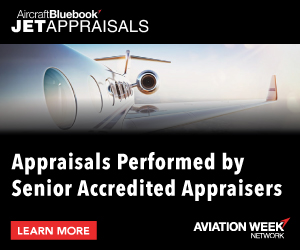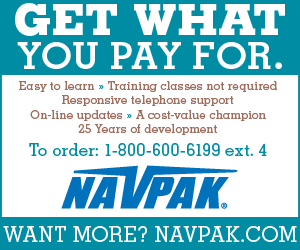 Aircraft Bluebook Marketline | Comments Off |
Aircraft Bluebook Marketline | Comments Off | Charter, Fractional, Ownership, Managed: Which Is Right For You?
 Wednesday, May 22, 2019 at 4:20PM
Wednesday, May 22, 2019 at 4:20PM | Business & Commercial Aviation
Today’s market for private aviation offers a dizzying array of choices. What benchmarks do advisors use when guiding customers among them?
In a simple world, the expected number of flight hours for the year would dictate the choice of charter, jet card, fractional or “full” or managed ownership. But there is substantial overlap among the options because of the needs and wants of customers.
So, while acknowledging the flaws of benchmarking choices by flight hours, here are overlapping ranges:
0-25 Hr. Trip-by-Trip Charter
25-100 Hr. Jet Card
25-250 Hr. Fractional
150-400 Hr. Ownership
Trip-by-Trip Charter: Do you only use private aircraft occasionally? Do you know what you need/want for aircraft size and capability? Charter companies were the original charter brokers. They forged relationships with the local businesses that used charter, and they built informal networks to cover the need for substitutes and larger aircraft — i.e. “You need a Gulfstream for the next trip? Don’t worry. I know a guy.”
As the industry grew, charter companies hired people whose sole job was to build these customer and charter network relationships. And then those people began to leave (with their lists) and become brokers.
So, if you want to book trip-by-trip charter, build a relationship with a charter company or a broker. And as your usage increases, they will tell you about jet cards.
Jet Card: What is it? Jet cards grew out of an older business model called “block charter.” Commit to buying 50 flight hours from your local charter company and receive a nice discount. Today, there are hundreds of choices. In fact, the only common denominator is a discount for a block charter commitment.
Many, if not most, of the offerings are made by brokers, not charter companies themselves. Don’t be fooled by a low hourly rate: The devil is in the details, and the details are a maze of fuel surcharges, daily flight minimums, service area limitations and dozens of other factors.
Before deciding on a jet card, decide what matters most. Long-time readers of Cause & Circumstance don’t view operator safety as a given. Yet some customers assume that any and all operators are safe, and, therefore, why not seek out the lowest price? Price should never be the sole factor in any aviation decision.
Is there a real company that you will be trusting with your funds and your safety? What is its criteria for selecting operators? Talk to other customers before committing.
Fractional: Fractional aircraft ownership programs officially date back to the inception of NetJets in 1987. That is when the N-numbers ending in QS began. Now ubiquitous on FBO ramps, “QS” stands for “quarter-share.”
Although FAR Part 91, Subpart K was created just for fractional ownership operations, today many of the flights are operated under Part 135, either because the customer bought or leased less than the minimum interest required for fractional operations, or simply because the customer elected not to share operational control with the program manager.
Fractional programs helped spawn the growth of jet cards with the Marquis Jet Card, which allowed customers to purchase 25 flight hours in the NetJets program. Today, fractional and at least some jet cards are very similar. Do you sometimes need two jets on the same day? No problem. Heavy jet today, light jet tomorrow? Sure. Because of the flexibility of fractional, some companies buy more than 400 hr. a year, even though they could easily justify “whole” aircraft ownership.
Management Company: There is a step between owning a fractional aircraft share and having your very own flight department. Own your own aircraft, but have it managed by a charter/management company.
You can have the aircraft managed by a charter company, and still have your trusted crew. And the aircraft can be chartered to others when you are not using it if you want to offset overhead. Most companies give you the choice of being the direct (W-2) employer of the crew, or the management company will manage payroll and benefits.
However, if your W-2 crew is to fly for the charter company under Part 135, then those pilots will need to sign “agency agreements” to acknowledge that they are under the operational control of the charter company on Part 135 flights.
But how do you choose a management company? Price should not be the first criteria. Talk to other owners that use the company. Typically, the choice is between a large national operation, such as Executive Jet Management, sister company to NetJets, or a local charter company. Many owners prefer the local touch and having a private facility at their home base. Jet Linx is a national company that provides numerous local bases, so that the aircraft owners can have the private facility experience at each base.
To charter, or not to charter: Done right, chartering out your aircraft when you are not using it offsets your cost of ownership. Done wrong, additional maintenance costs eat up the income, and wear and tear reduces the resale value of the aircraft. Where is the happy medium? There isn’t a simple hour benchmark answer.
You will need spreadsheets and specific operating costs to find the balance that works for you. On the plus side, the charter market today is ravenous for additional aircraft. If you want charter hours for your aircraft, you will get them.
Ownership: For those who need, or can simply afford to own an aircraft and employ their own flight department, the satisfaction that comes with trusted people and custom, trusted equipment is still the ultimate in private aviation. There are a number of flight departments today that operate less than 200 flight hours per year. Conventional wisdom would dictate that these users would be better served by fractional ownership or charter. The owners know that. They just don’t care.
 Aircraft Bluebook Marketline | Comments Off |
Aircraft Bluebook Marketline | Comments Off | 


